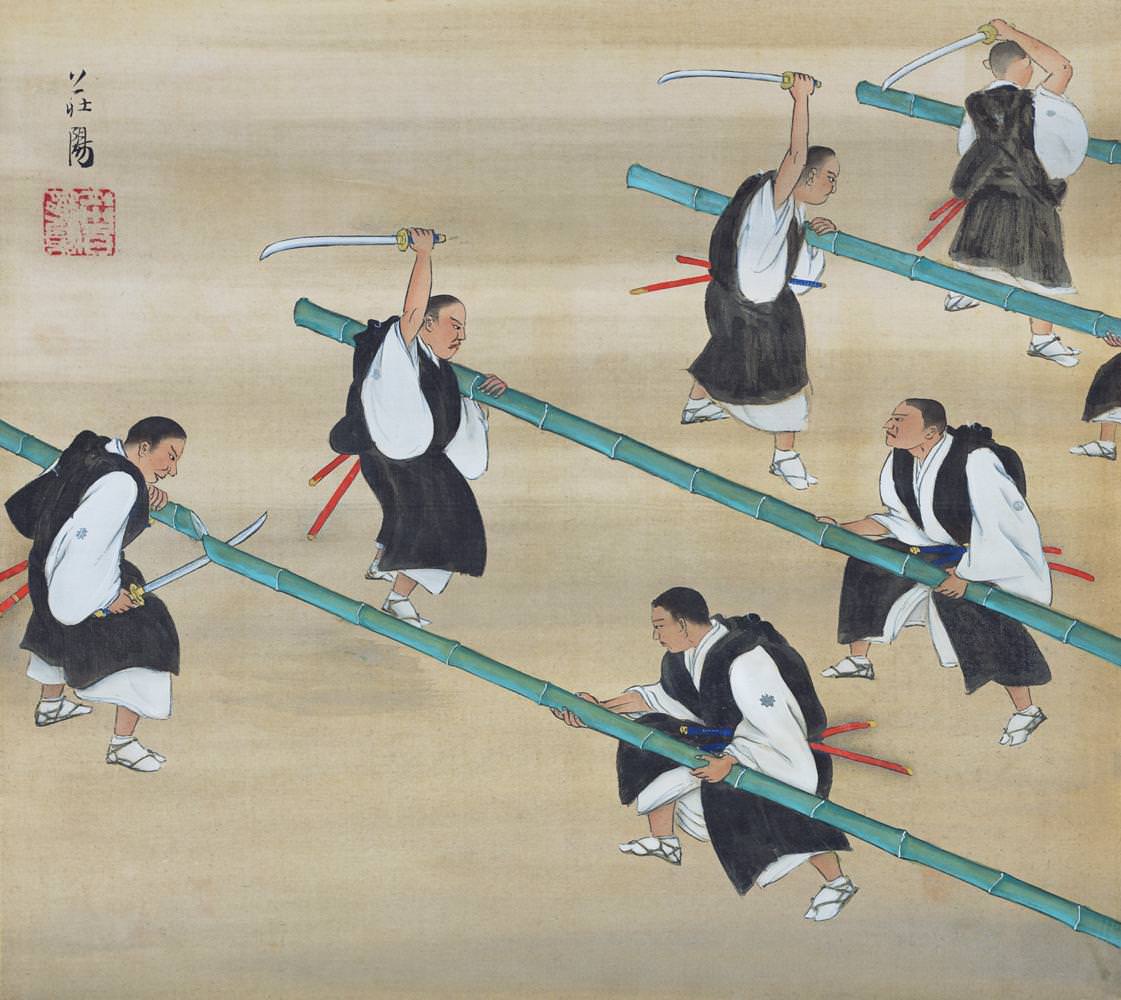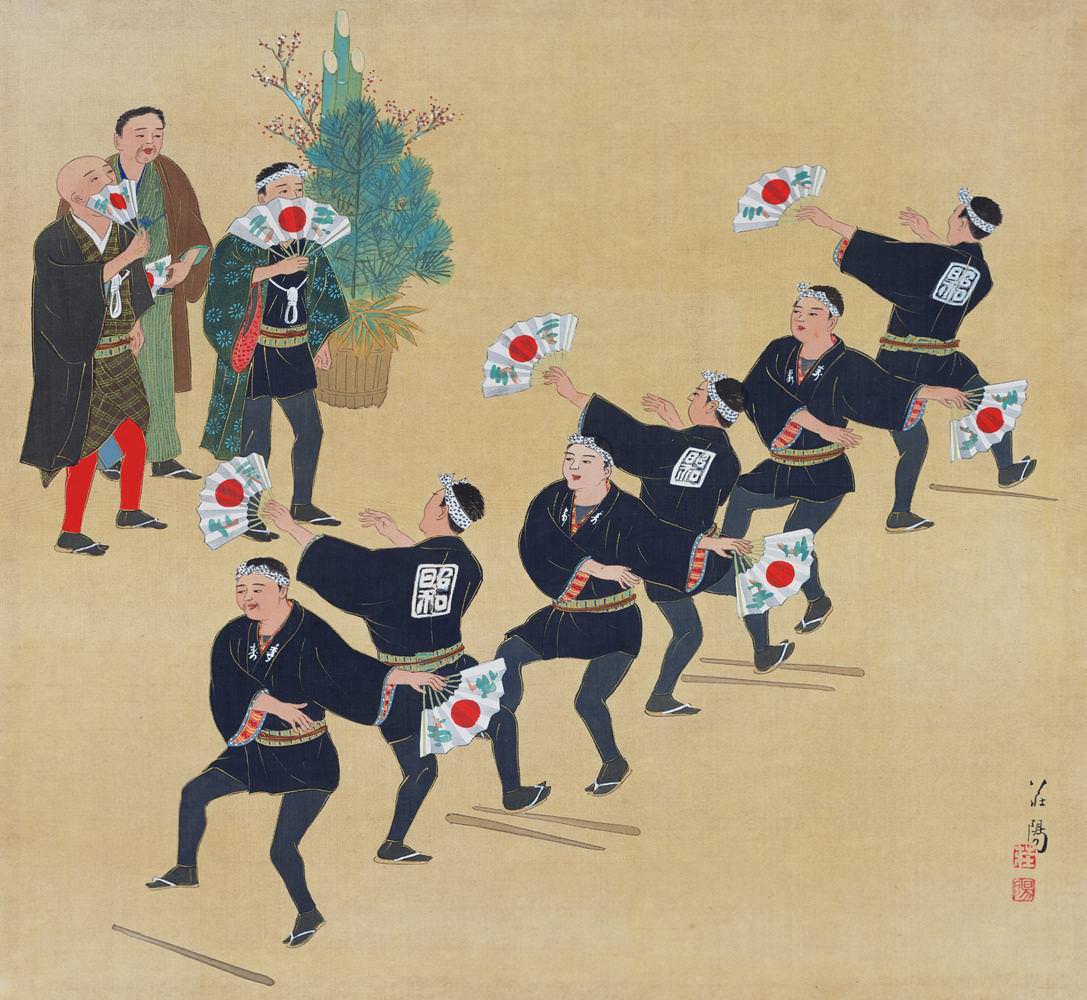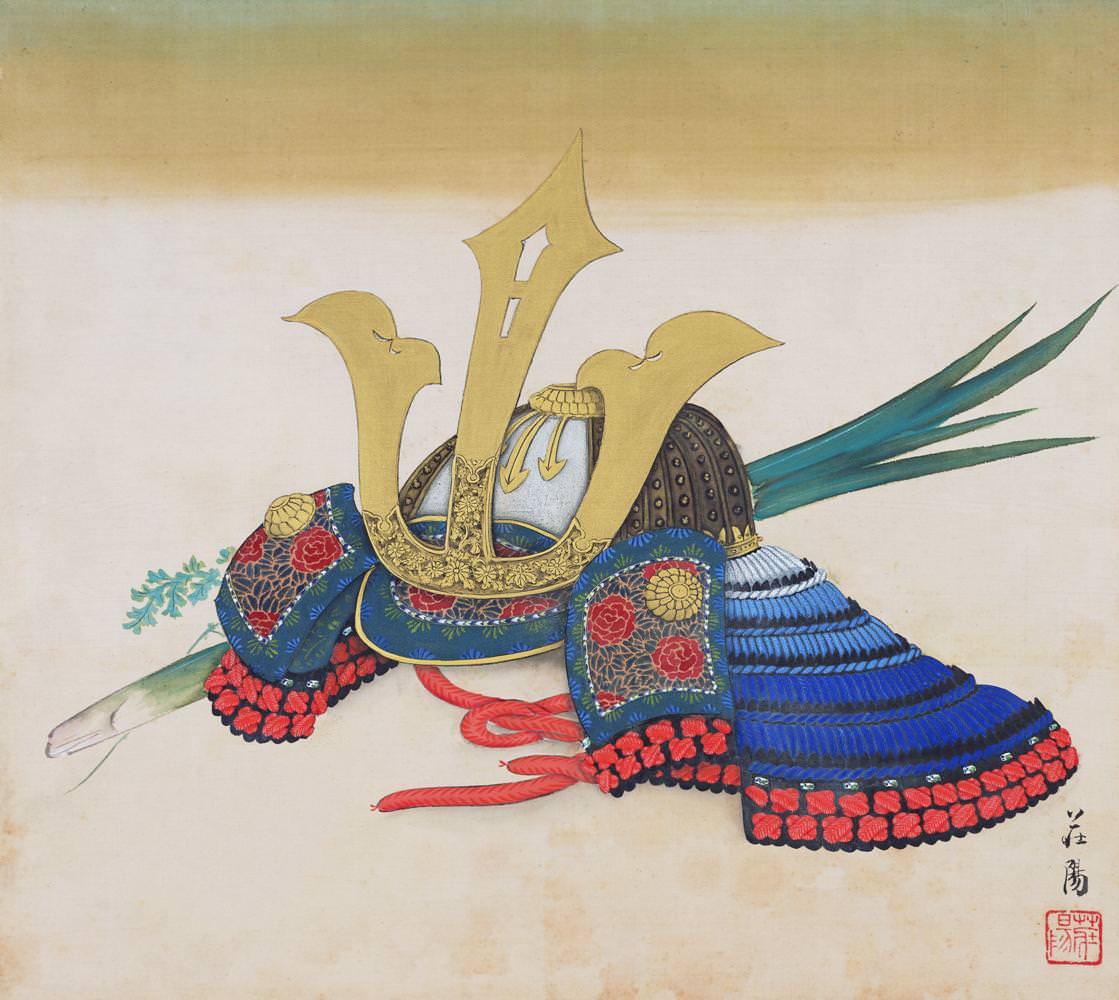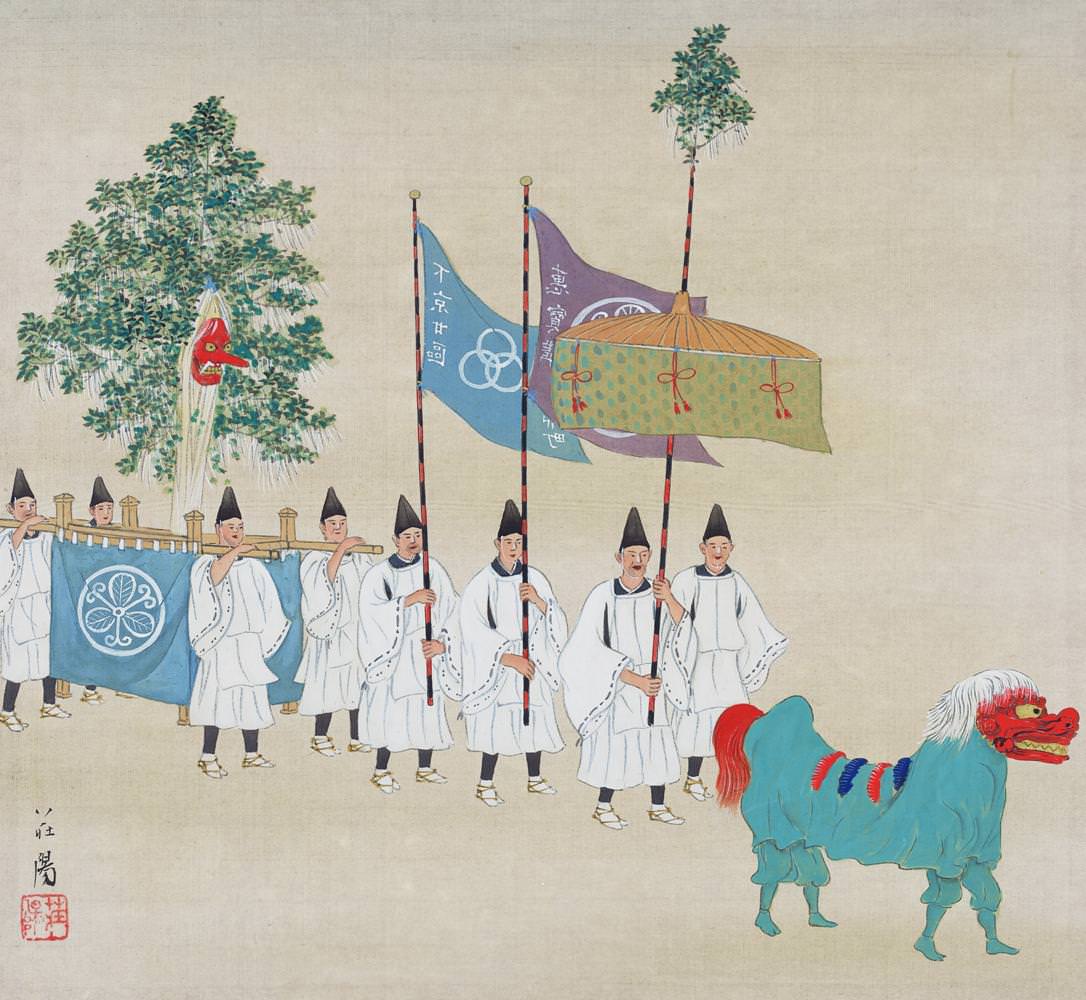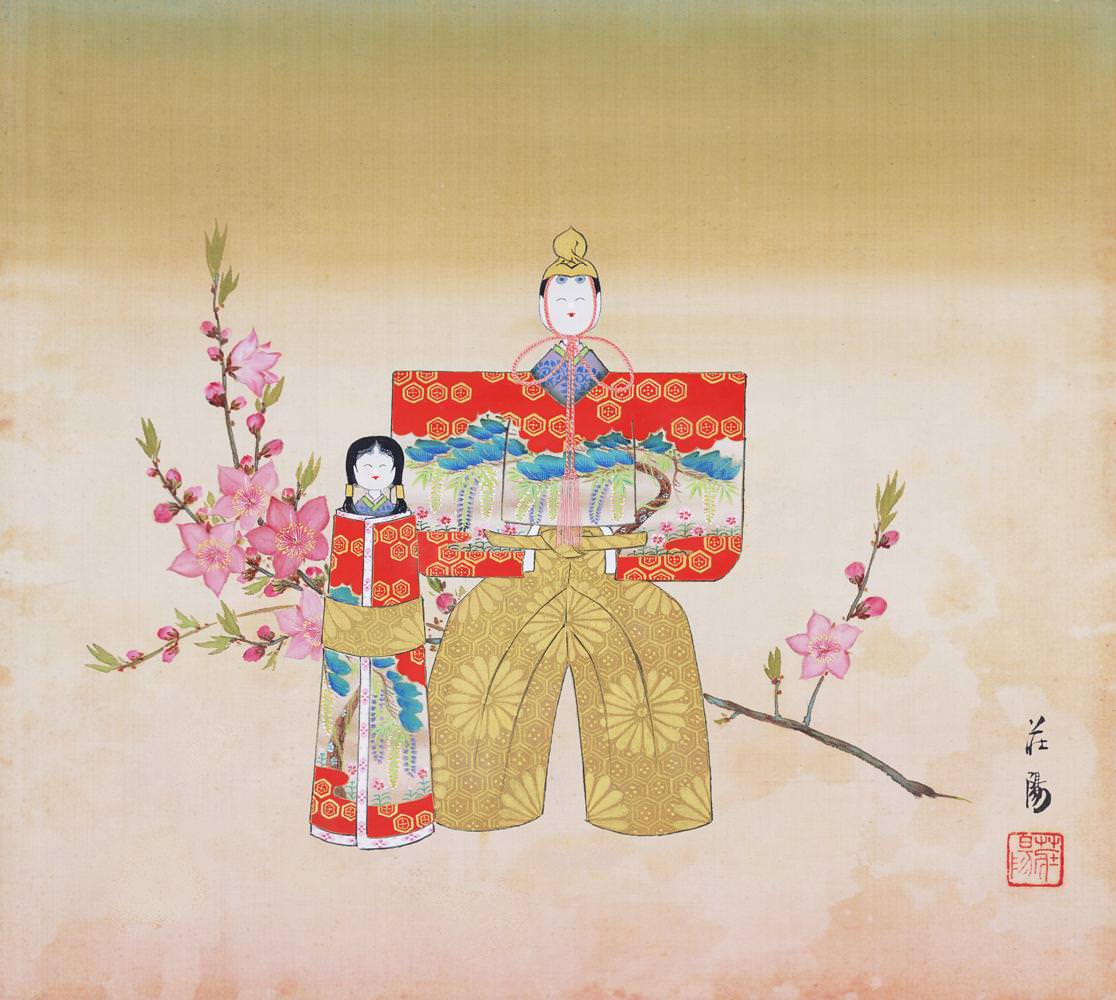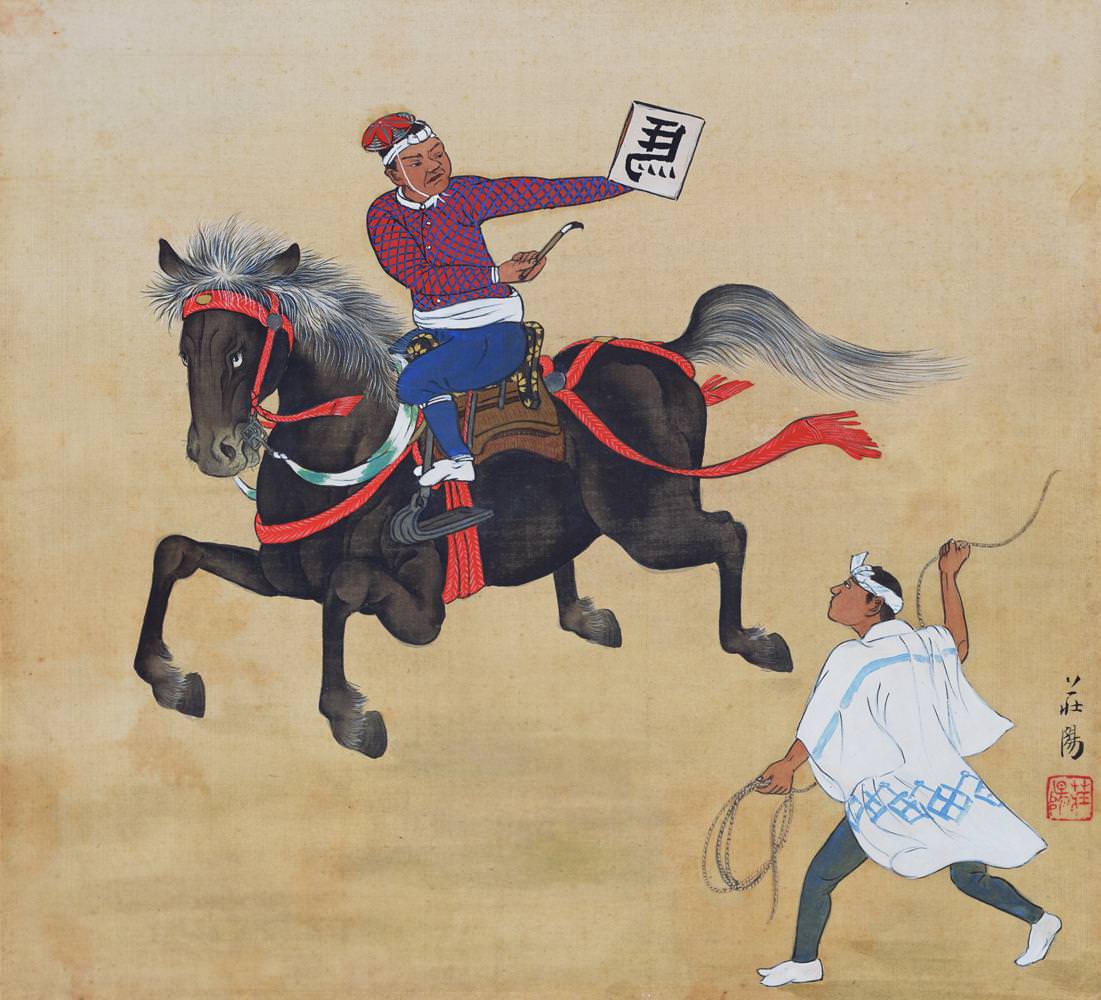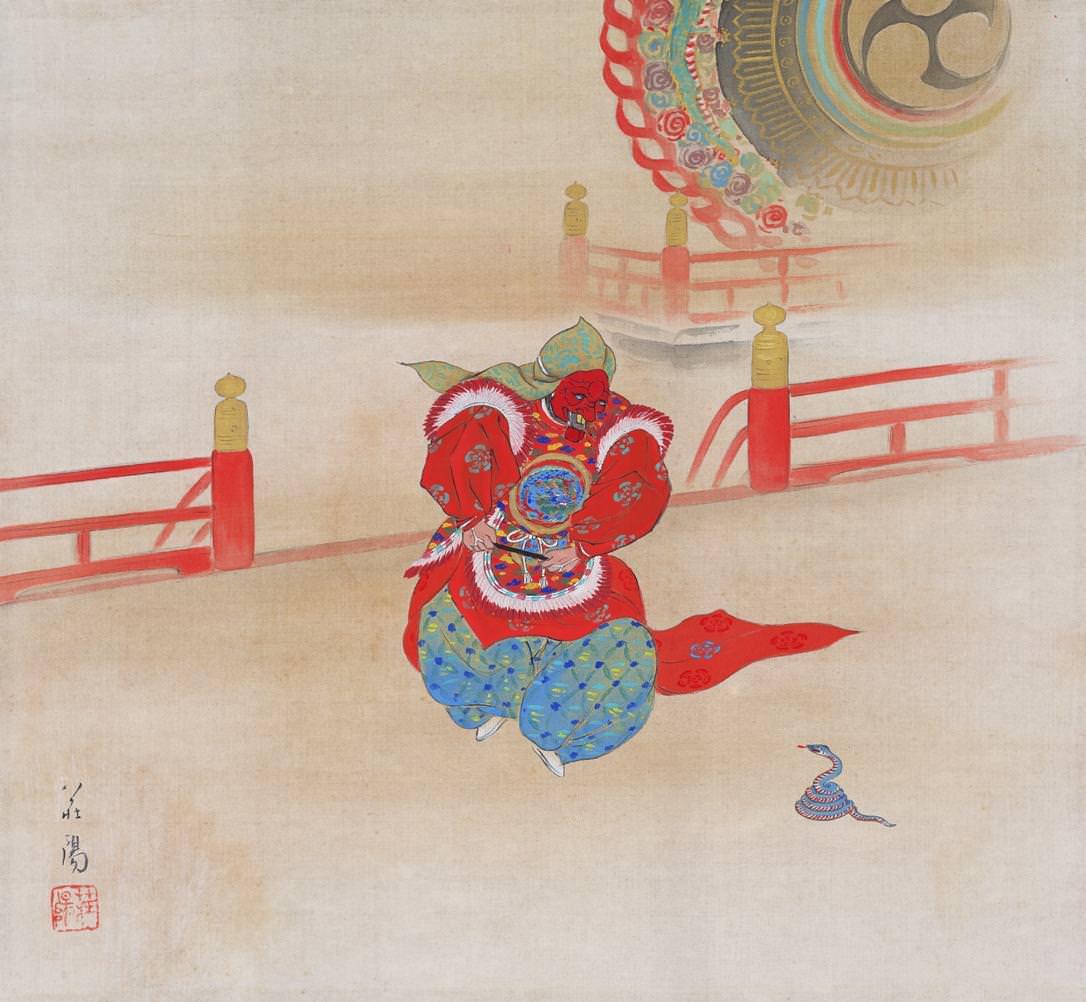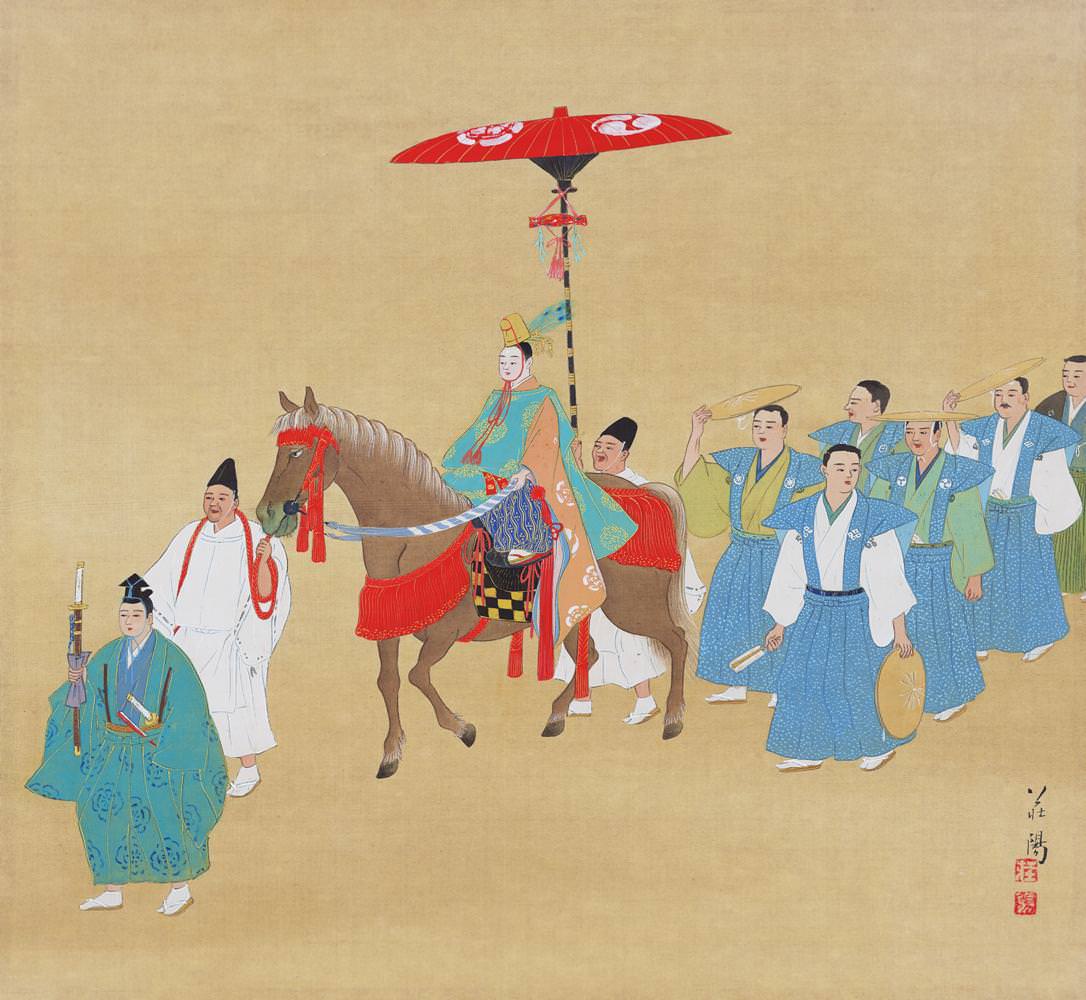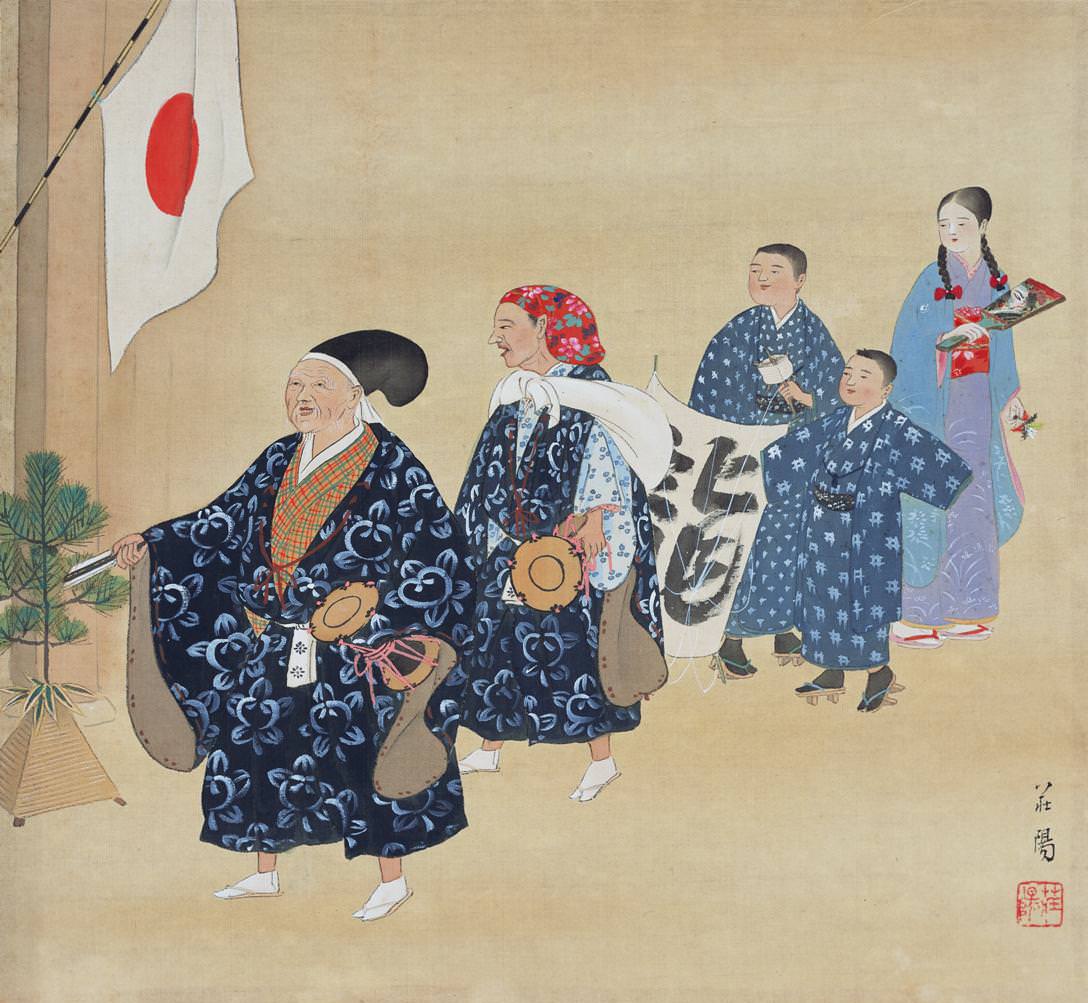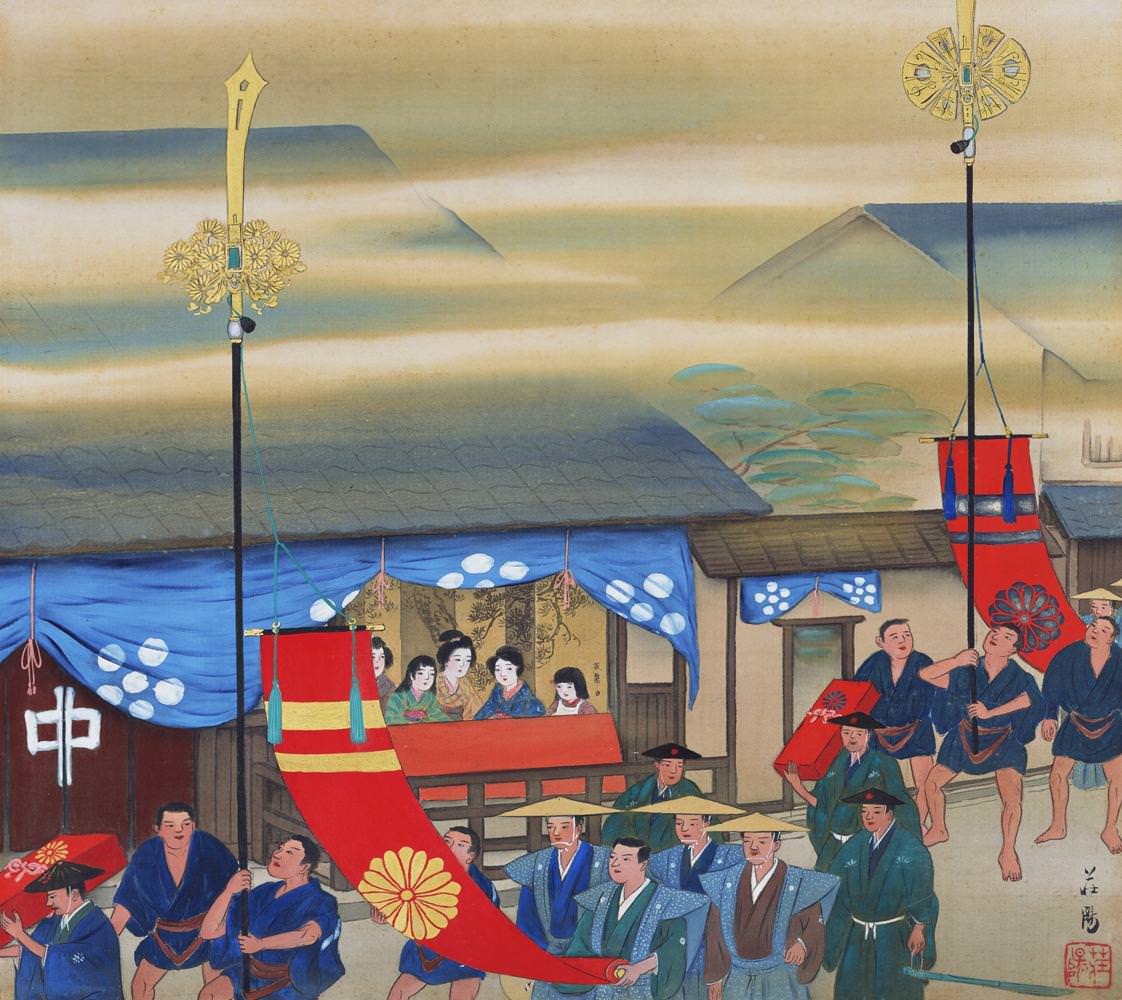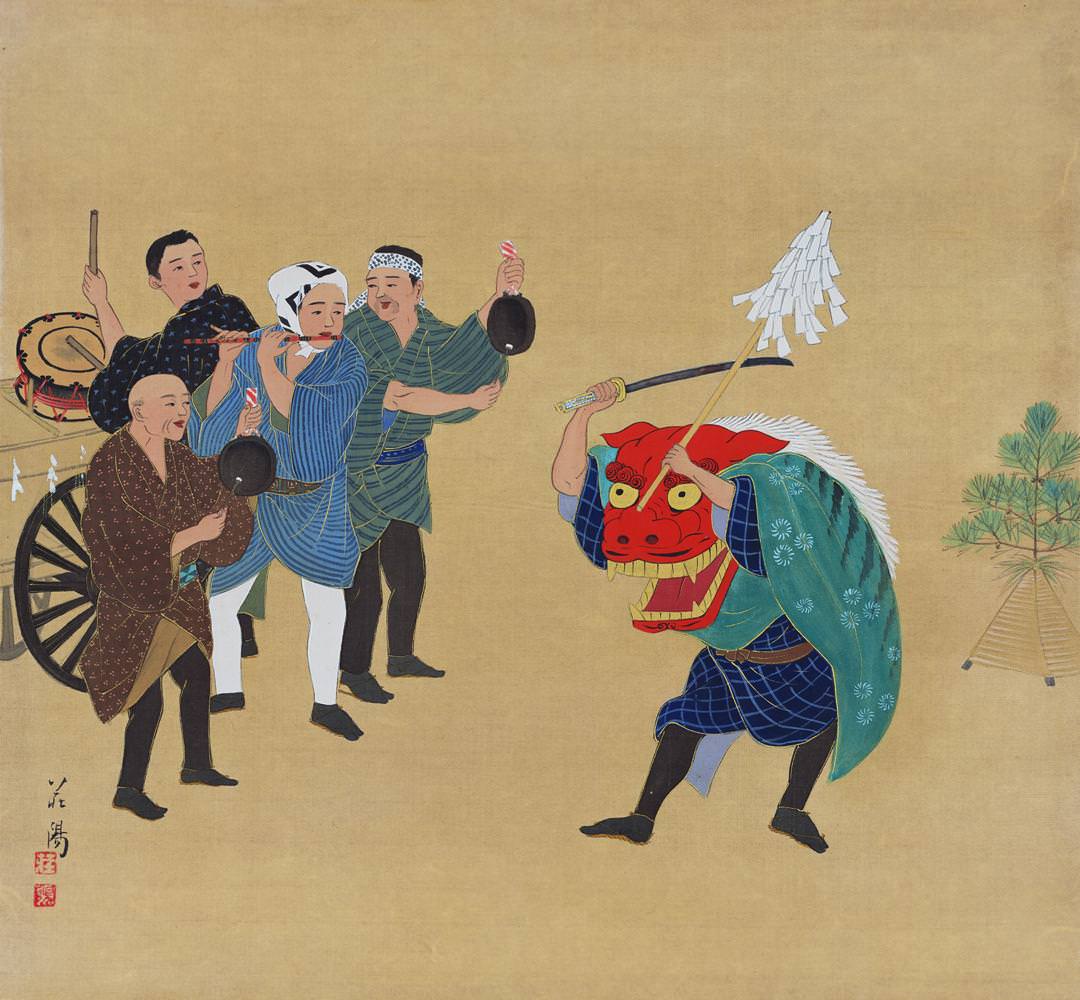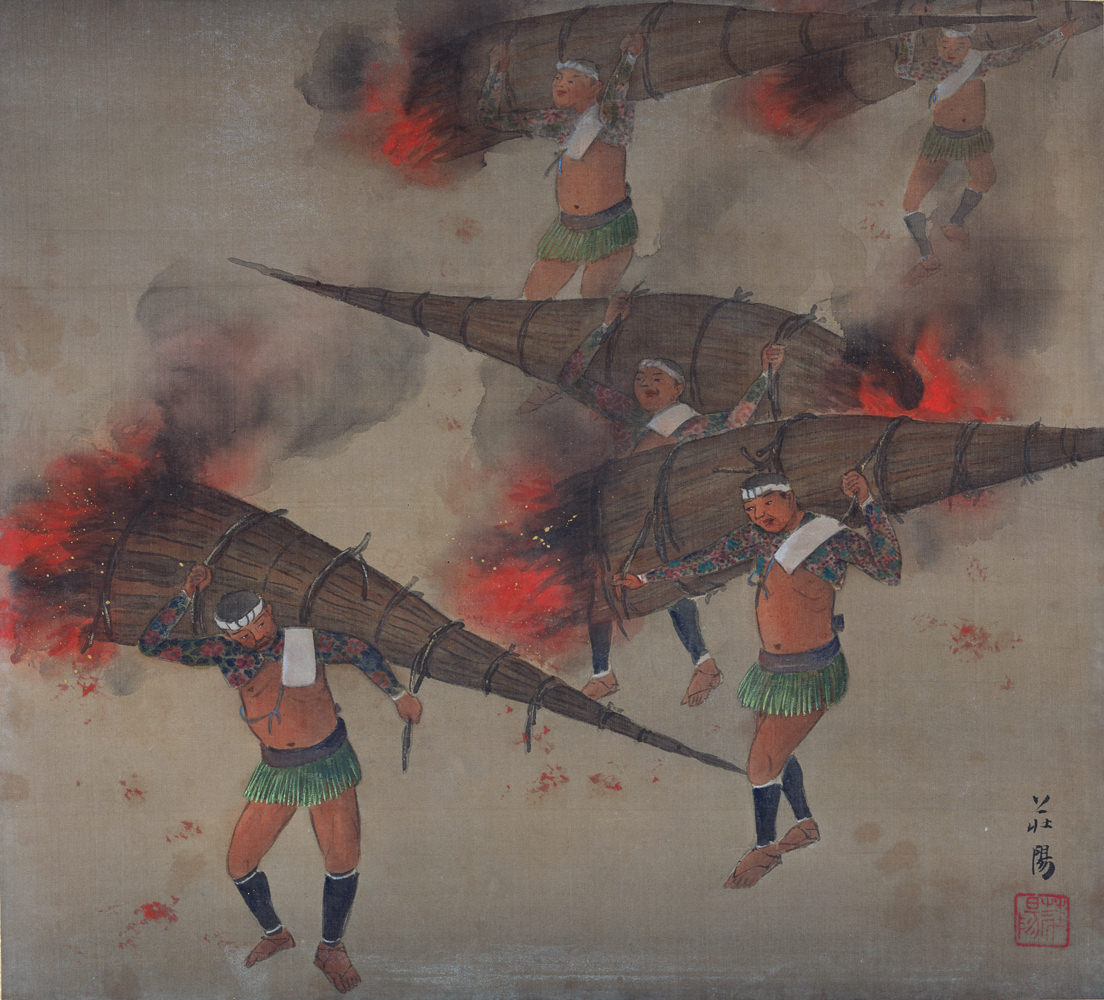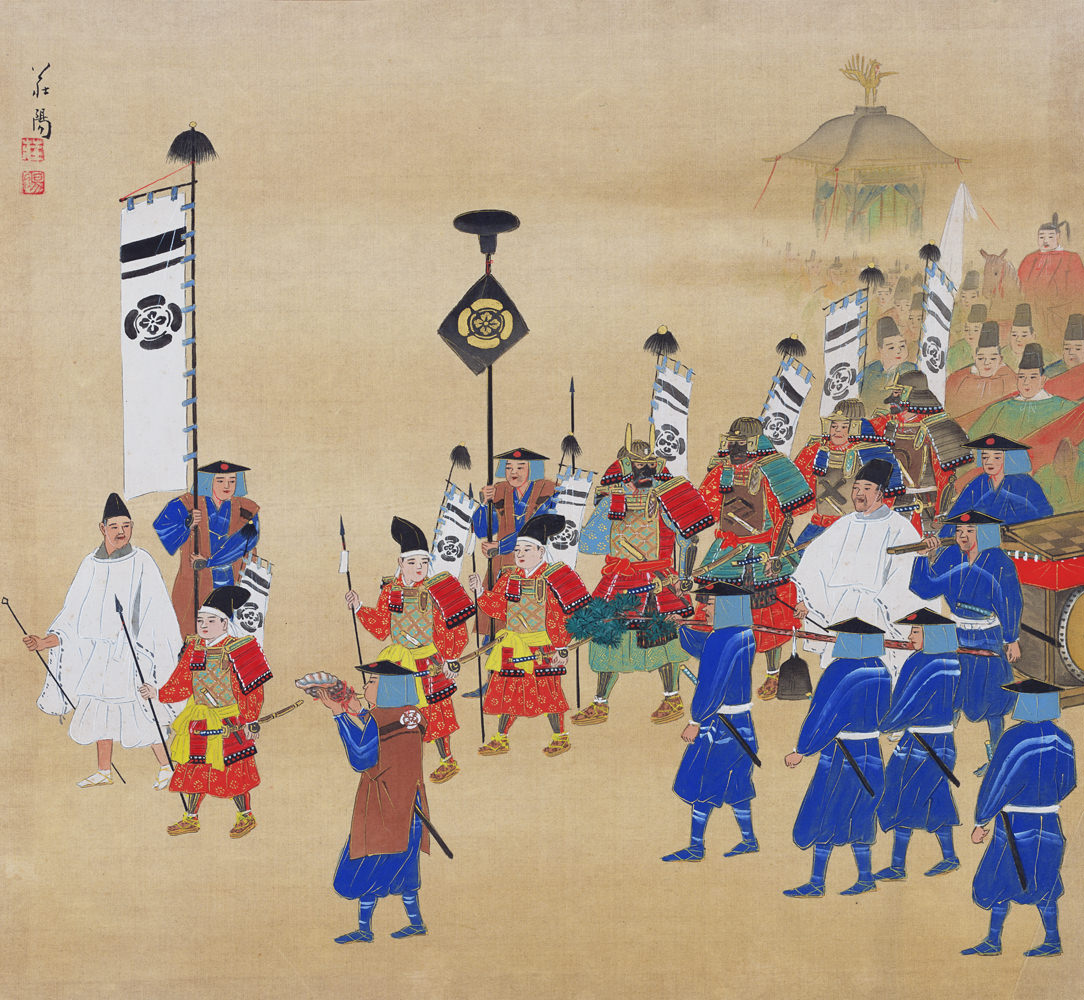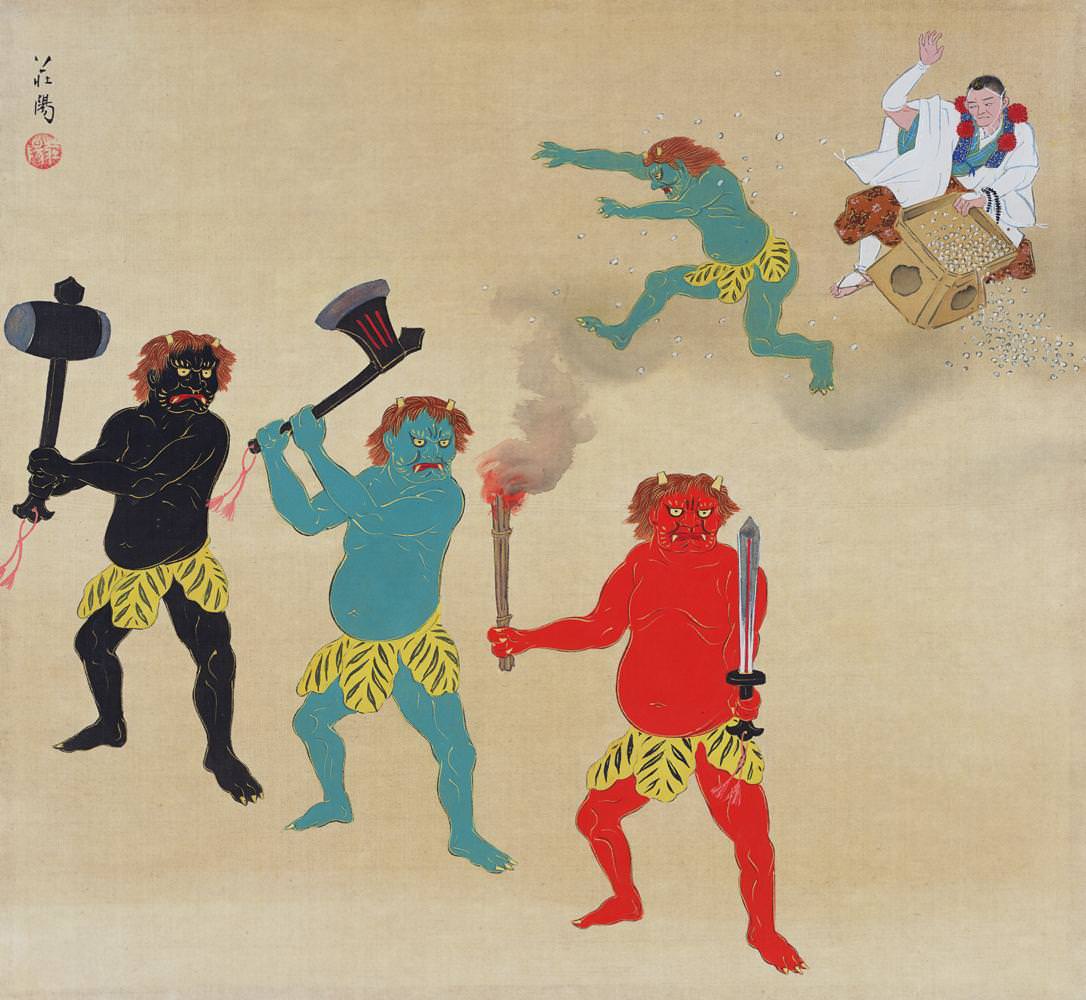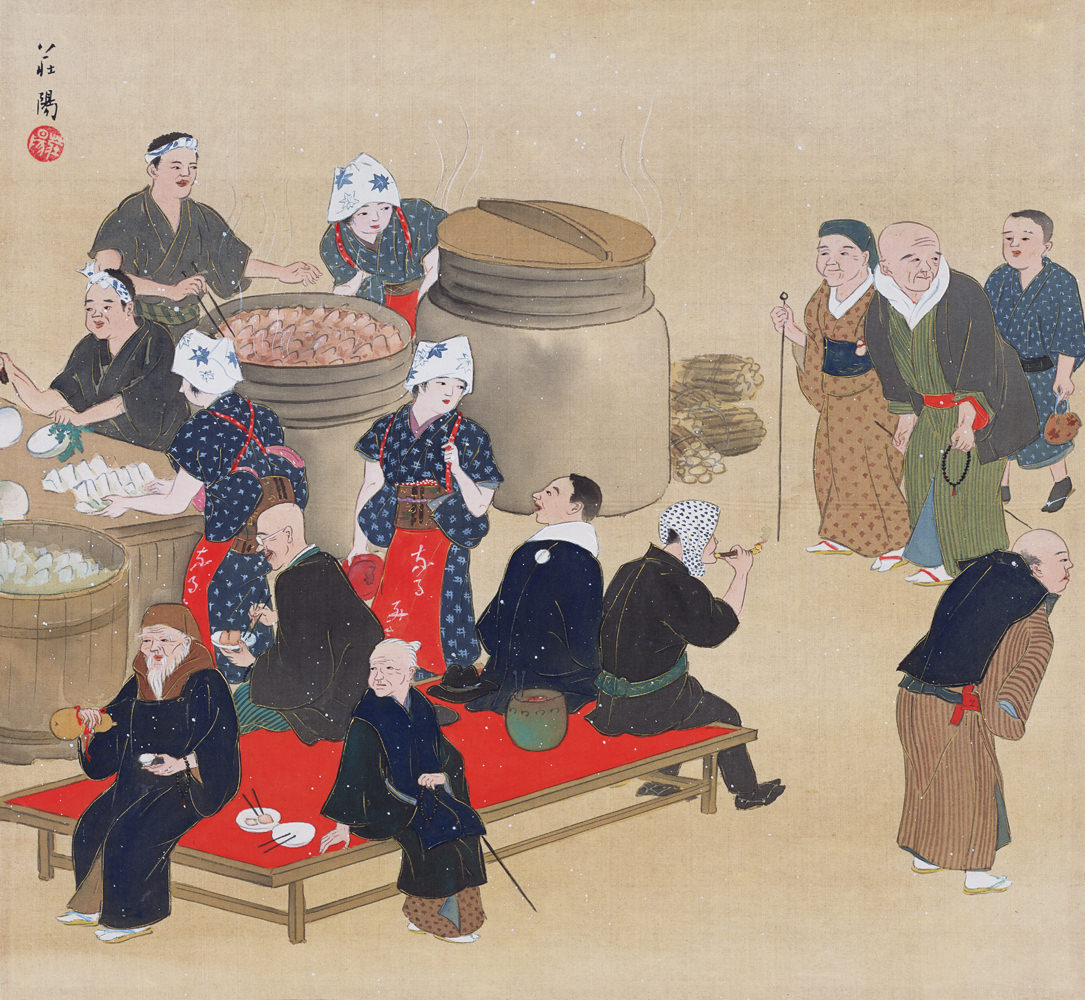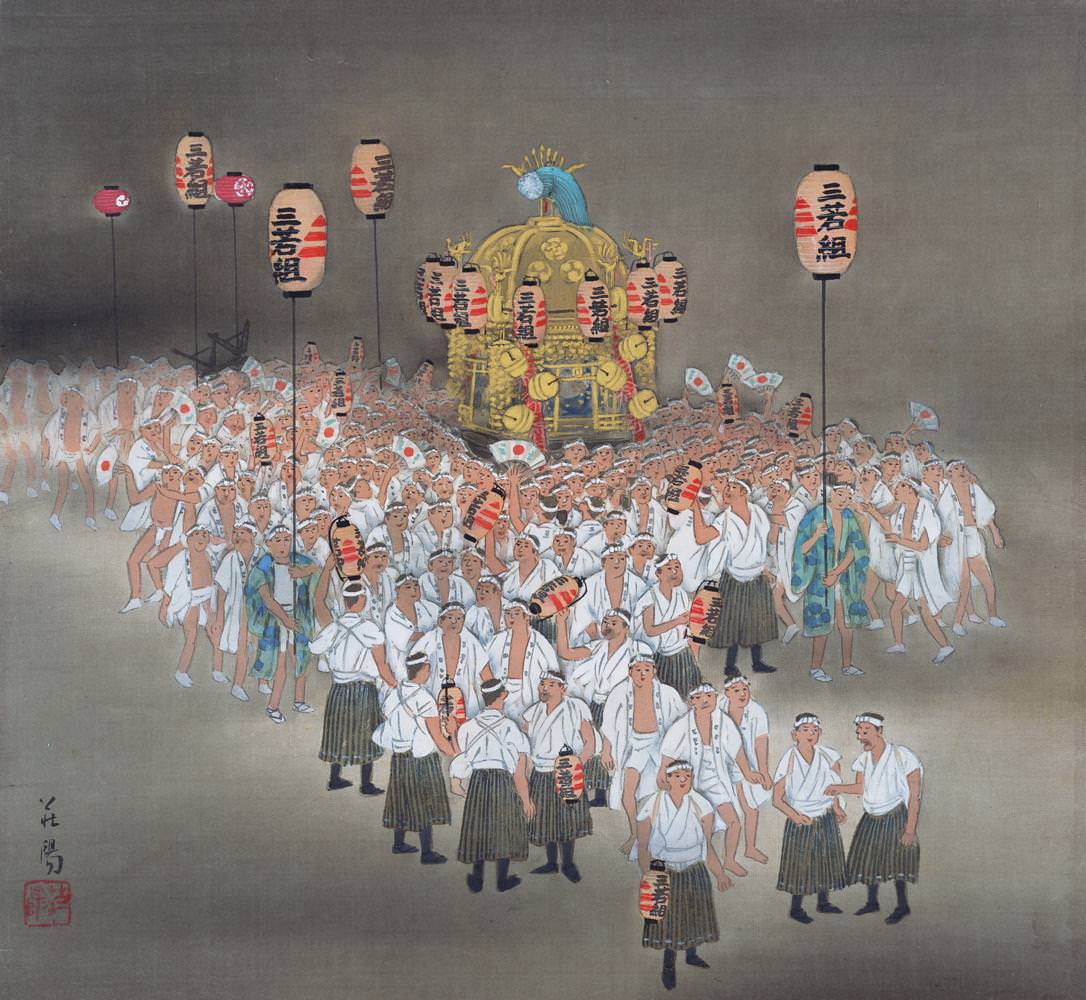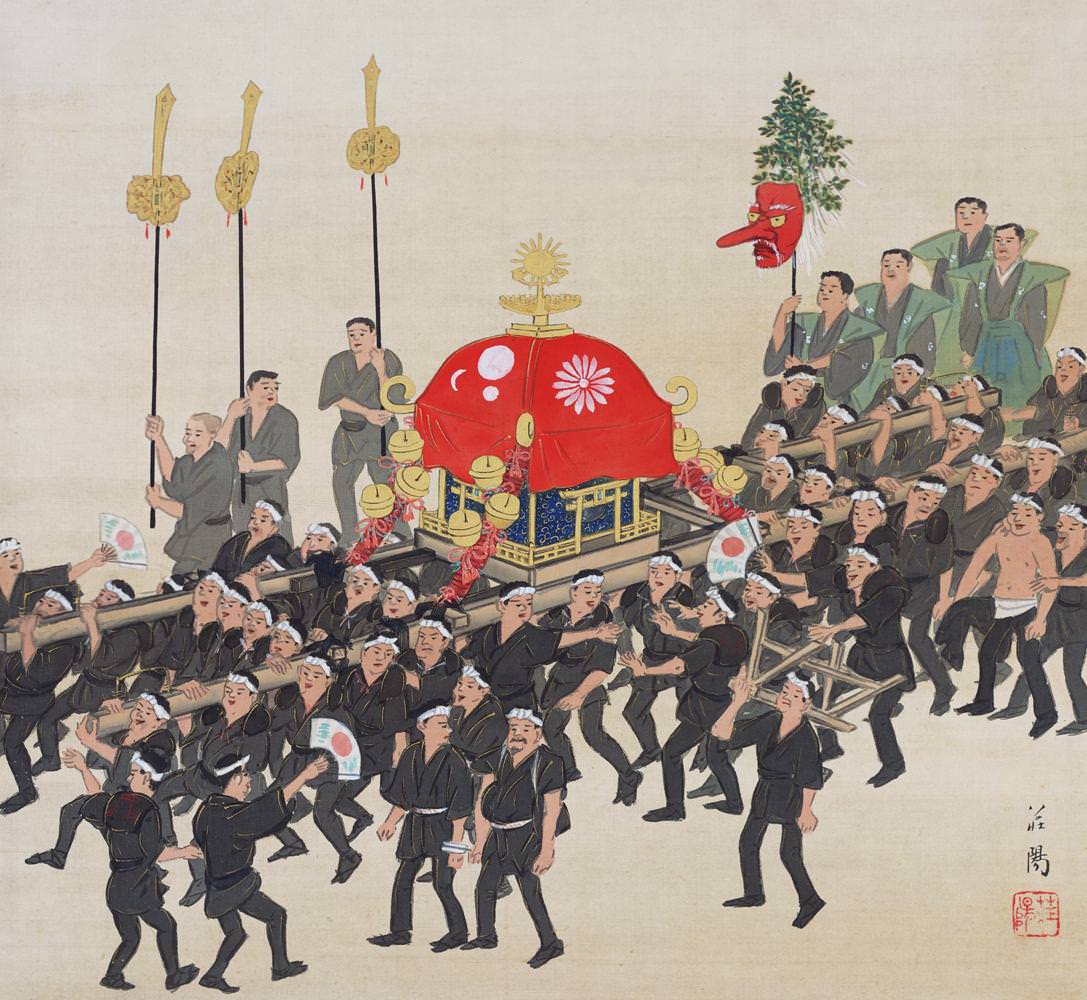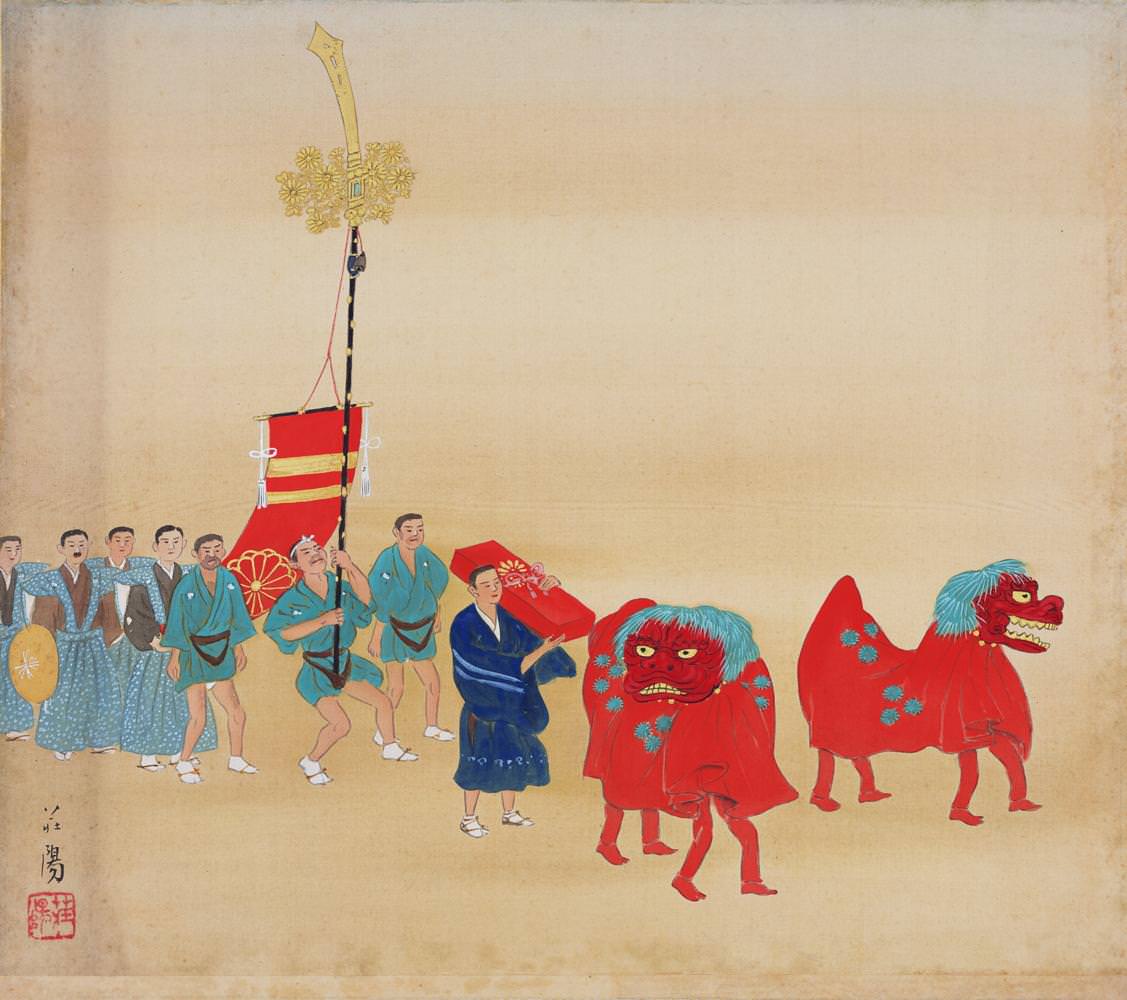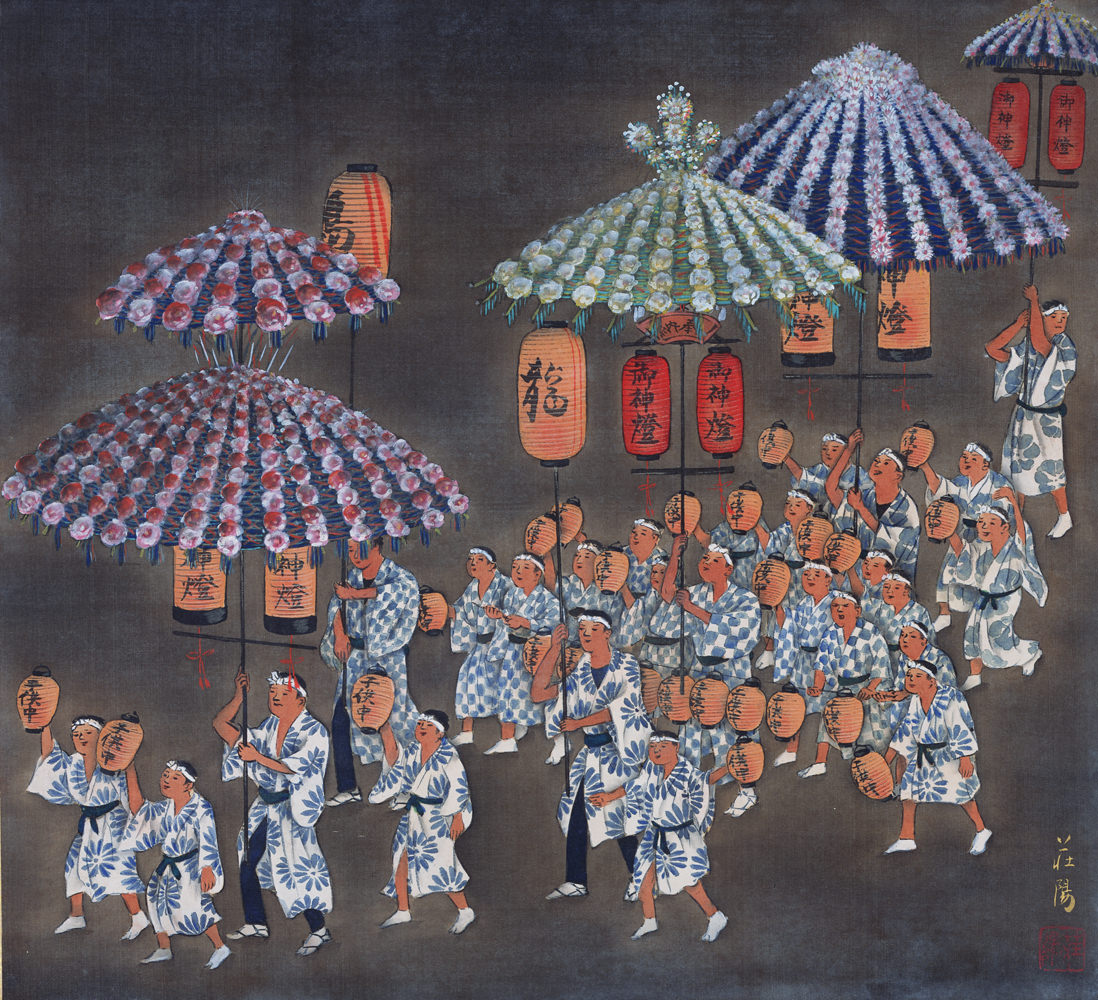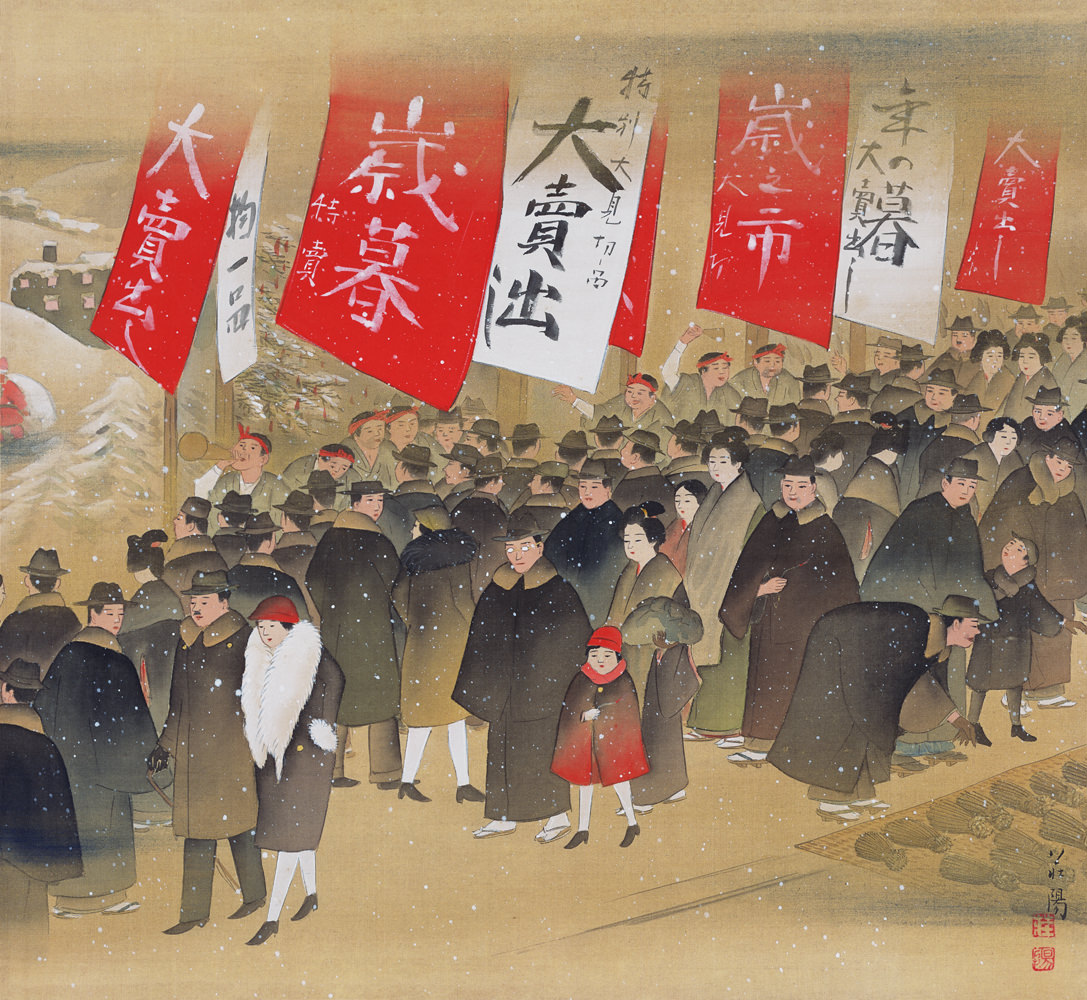Step back in time to the 1920s and imagine a beautifully crafted album. Instead of photographs, it holds delicate silk paintings, each depicting a vibrant festival from Kyoto, Japan. Back then, Kyoto was known as Miyako, meaning “capital,” a fitting name for a city that held this title for over a thousand years. These silk paintings offer a unique window into the heart of old Japan, showcasing the traditions and festivities that once filled the streets of Kyoto.
One striking aspect of these paintings is the masterful use of light and shadow. Like many forms of Japanese art, these illustrations play with the contrast between light and dark, creating a sense of depth and atmosphere. The darkness might represent the night sky, lit by the warm glow of lanterns during an evening procession. Or perhaps it’s the shade of a temple roof, offering relief from the bright summer sun as a festival unfolds beneath.
These paintings aren’t just beautiful; they’re also rich with historical detail. We can see the types of clothing people wore, the decorations they used, and even the expressions on their faces. Each detail tells a story, offering clues about the specific festival and the lives of the people who celebrated it.
One painting shows the Gion Matsuri, one of Kyoto’s most famous festivals. Huge, elaborate floats would parade through the streets, accompanied by musicians and dancers. The silk painting would capture the grandeur of these floats, adorned with colorful fabrics and intricate carvings. We might even see people pulling the floats, their faces etched with effort and pride.
Nobles dressed in traditional court attire would ride on horseback, their costumes and the horses’ decorations meticulously recreated in the painting. This artwork would transport us to a time of emperors and aristocrats, showcasing the pageantry and refinement of the era.
The beauty of these silk paintings extends beyond the individual festivals they portray. They offer a glimpse into a lost world, a time when life moved at a slower pace and traditions were deeply cherished. We can imagine the excitement of the crowds, the sounds of music and laughter, and the smells of food stalls filling the air.


